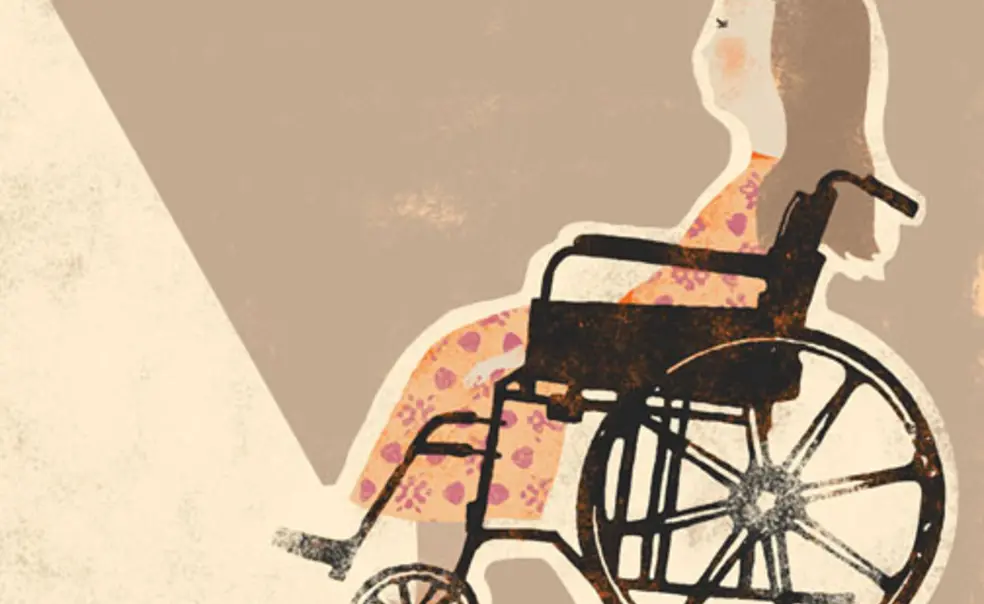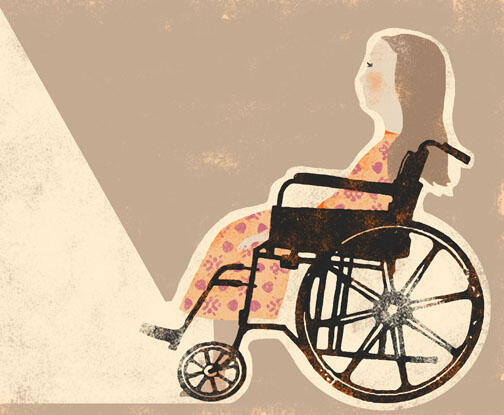Cornelia Liu Trimble ’84 is a physician at The Johns Hopkins Hospital who researches immune therapies for human papillomavirus (HPV) disease.
Today I saw a patient — call her “S” — whom I have been caring for since I was an intern. She has had a diagnosis of systemic lupus erythematosus since she was 15 years old; now, she is 26. Lupus is a disease in which the rheostat of one’s immune system is set on hyper alert, and turns on one’s self. The name “lupus” derives from the Latin word for wolf; patients have a characteristic facial rash that involves their cheeks and the bridge of the nose, resembling the mask of a wolf. Erythematosus, because the rash is red (Greek: erythros). Systemic, because her immune system is ravaging every organ system I can name.
In the decade I have known her, her immune system has destroyed her kidneys; caused enough inflammation in her blood vessels that she has had life-threatening clots in one leg, her heart, and her lungs; caused her blood pressure to go so high that it could cause a stroke; attacked her bone marrow so that she can’t make normal amounts of blood cells; attacked the glands that make tears, so that her eyes are too dry to cry; slowly attacked the muscles in her chest that are supposed to draw breath; and attacked her intestines so that she cannot absorb many nutrients. Her immune system has turned on the muscles that help her to swallow, so she has gastric reflux and has vomited hard enough to tear the lining of her esophagus.
To tame the wolf, she takes 17 different medications each day.
Sometimes when I am asked to explain to children what I do, I begin by asking them, “How many of you know someone who had cancer?” Then I ask them, “How many of you know someone who had polio?”
The last century was the first in which children could expect to know their grandparents, a success story possible because of three broad advances in public health: sanitation, antibiotics, and vaccines. Now, we live long enough to get cancer, and it turns out that as many as one in five human cancers are caused in the context of a chronic infection. I work in a large field in which researchers study ways to elicit immune responses that will recognize and eliminate malignant cells. The virus I study, human papillomavirus (HPV), causes more human cancers than any other virus.
The conundrum: In most people with normal immune systems, HPV does not cause disease. HPV is such an indolent virus that it is eliminated by the immune system without providing any clinical signs of infection. Clearance can take months to years, and how that happens still is not known. Unlike the flu, mumps, or measles viruses, the strains of HPV that cause cancer do not cause symptoms, so that without a test, a person never would know he or she was infected. While a person’s immune system is deciding whether HPV is dangerous or harmless, he or she will touch another person, and so the virus is passed on.
As HPV has evolved to fly below the radar, it is common. On a global scale, persistent HPV infection is the cause of 10 percent of cancers in women. Preventive vaccines recently have become available, but they must be given before exposure to be protective. They also are expensive and cumbersome to give, and so will not affect the burden of disease for decades. We think it should be possible to elicit a therapeutic immune response that could recognize a virally infected cell, and to attack it. That problem turns out to be not a very simple one to solve.
Because her medications suppress her immune system, S is susceptible to infections, and HPV has run amok, causing a cancer that is invading her most private parts. Her rectal cancer was not operable, and since I saw her last, six months ago, she has been treated with radiation. She undergoes renal dialysis three times a week. She has been hospitalized four times. Her problem list has grown; while her medications suppress her immune system from fighting herself, they also suppress her immune system from fighting germs. In addition to the rectal cancer that her HPV infection caused, she also has HPV in her cervix. Her body is colonized by bacteria that have become resistant to antibiotics: mycobacteria, staphylococcus, enterococcus. Her gut is overrun with another type of bacteria that normally is found in healthy people without causing disease; in her case, it leads to relentless watery diarrhea. The steroids that she must take have caused her bones to become brittle, and have caused her to have diabetes as well.
In an academic medical institution, the cultural currency has to do with established, quantifiable metrics — most visibly, the number and size of grant awards, and one’s list of publications. These are the endpoints by which one’s effectiveness and value are gauged. We have cured thousands of mice. We are moving, not quickly enough, toward immune therapies to treat human disease.
When I first took care of S, we both were young. I was newly married, and she had boyfriends. She was twice my size, literally. She was boisterous, laughed easily, and weighed more than 200 pounds. I am quiet, shy. But some patients get under your skin and find their way to your heart. Over the years, she has been a regular at our HPV-focused clinic; we are accustomed to each other.
I find a note in her hospital chart by the hospital chaplain: “Provided pastoral support through silent presence. No family member present. Will follow.”
I find another note in her chart: “Her mother recently had a recurrence of her drug-abuse problem, and is hospitalized in a prolonged inpatient drug-rehab program. Per the patient, her mother is her one major source of emotional support.” Three lines later, the note reads, “Pt has no acute complaints.”
Now we are exactly the same weight, but somehow, she looks emaciated. Her hair is brittle. Her skin is ashy and dry.
When she has her exam, she howls in misery, and her wail shrieks in my heart. Afterward, she says quietly, “I don’t mean to be mean, but I hate coming here.” I tell her, “I know,” and I find that I have not words to say more, and that I don’t want for her to have to see my sadness, to bear that, too. When I leave the clinic, she is sitting, in her hospital gown in a wheelchair, outside the registration desk by a window. In the thin light of September, she holds her face up to the sun. Her carriage is upright. She looks out at the city, through windows that extend from the floor to the ceiling. Whoever designed this building knew that sick people need ambient light.













No responses yet